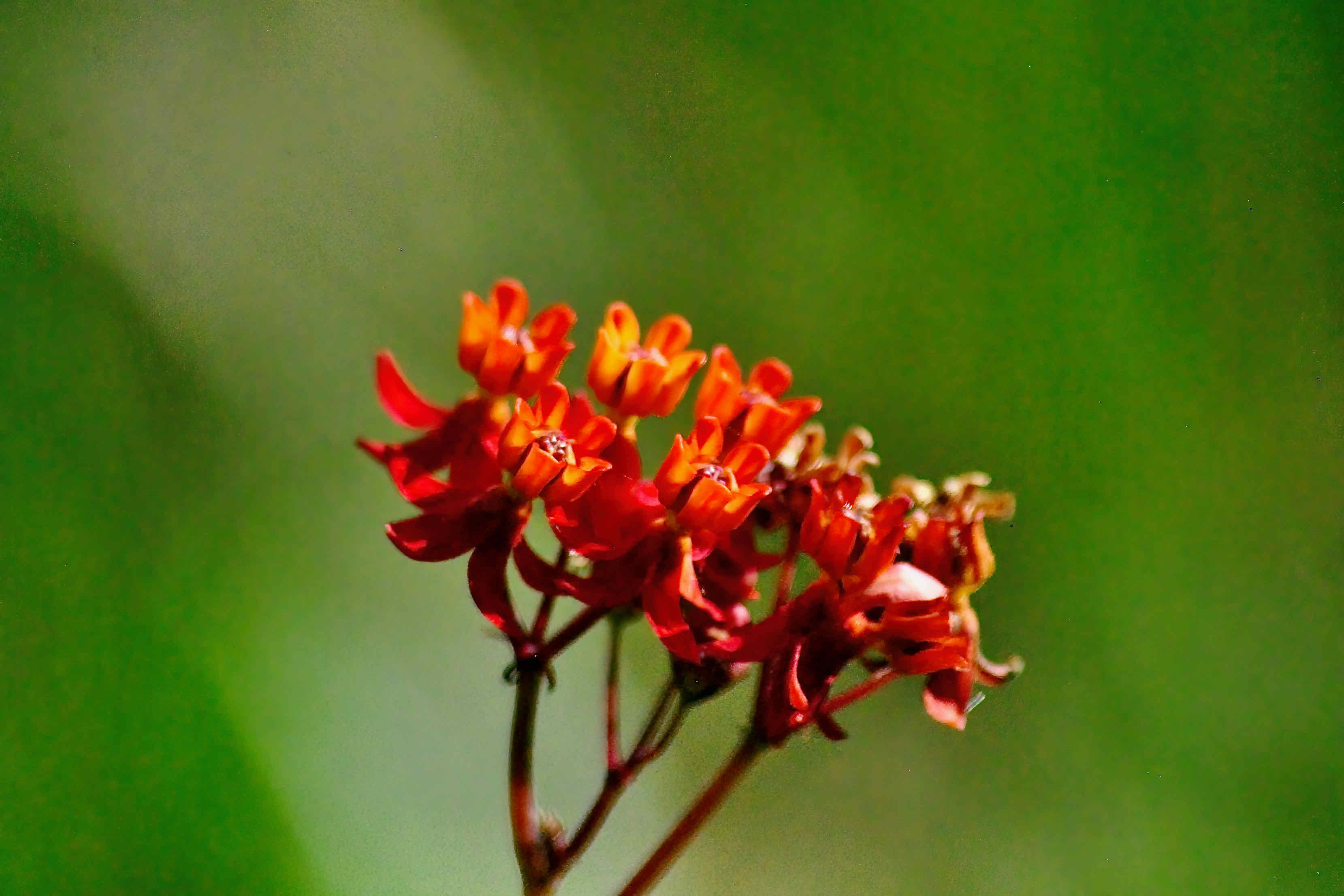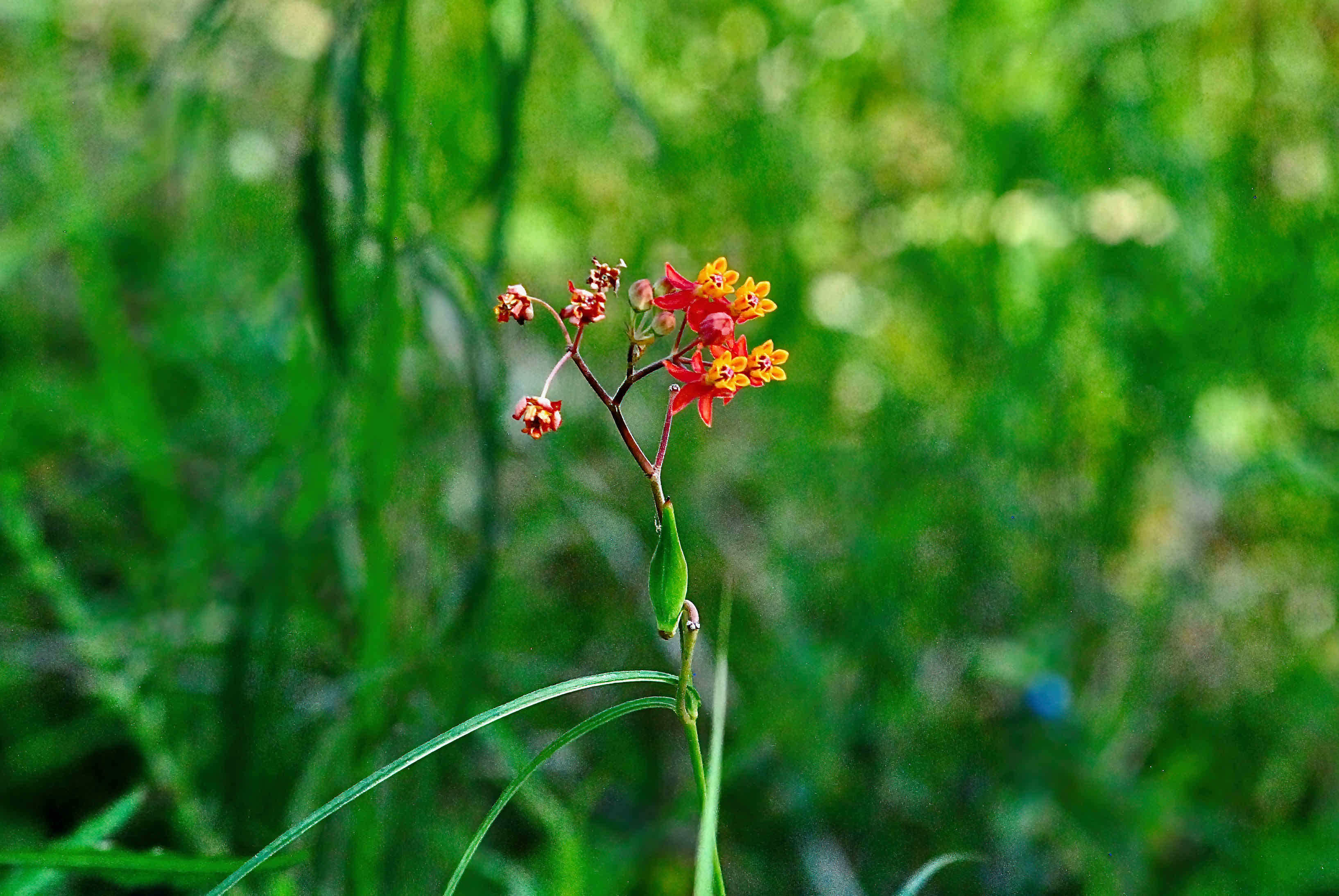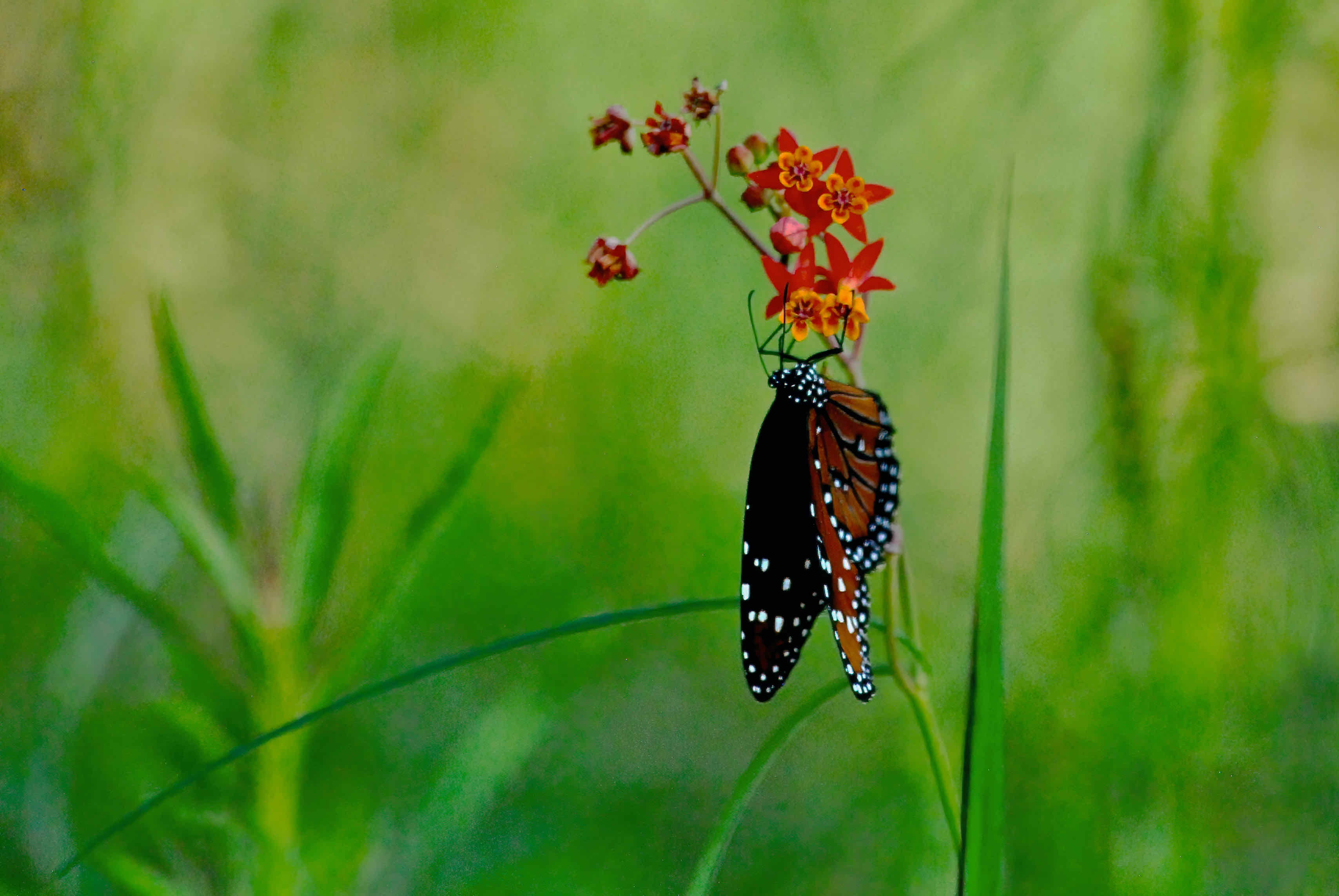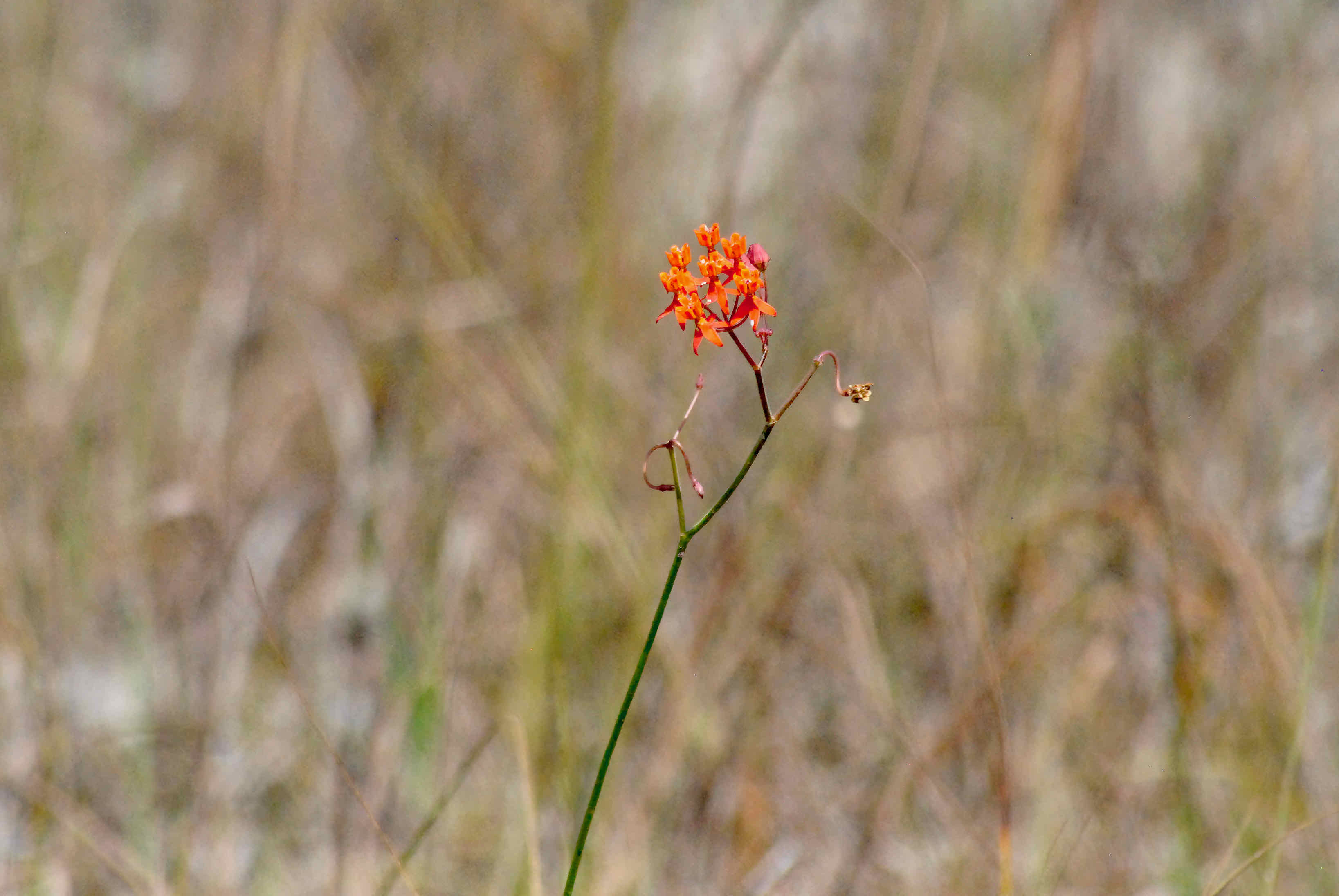
Fewflower milkweed, photographed at JW Corbett Wildlife Management Area South Entrance, Loxahatchee, Palm Beach County, in March 2015.
Fewflower milkweed, Asclepias lanceolata, is a whisper of a plant, sparse in vegetation on a thin stem during spring and summer, and devoid entirely in winter. The flowers, which begin to bloom come spring, are small and, as the name says, not exactly numerous. But they are bright, bright red and orange that shout fewflower's presence among the drab browns and greens of a wet prairie. Once easily overlooked, it becomes difficult to miss.
Fewflower milkweed is a Florida native found throughout the southeastern United States as far west as Texas and as far north as New Jersey. It is found in all but a handful of Florida's 67 counties. It's one of 24 milkweed species found in the Sunshine State, 14 of which are found in South Florida.
Fewflower milkweed grows in wet habitats, wet pinelands and marl prairies. It does not tolerate drought but likes full sun. Its brilliant flowers appear in umbels, or heads, of 10 or less, blooming in the spring and summer. They are star-shaped typical of milkweeds. The flowers produce capsules filled with whispy seeds that are dispersed by wind, also typical of milkweeds.
The plant itself grows to about two or three feet tall, taller than it is wide. The leaves are long and thin — lance-shaped, if you will. In fact, that's inspiration for one fewflower milkweed's other common names.They are arranged alternately along the stem.
Despite its wide range, the Institute for Regional Conservation classifies fewflower milkweed as rare in South Florida. No state or federal agency lists it as either threatened or endangered, however.
Fewflower milkweed is a host plant for both the monarch and queen butterflies, not surprisingly. Both butterflies are part of a group that specializes in using milkweeds as host plants, using the chemicals they contain as a defense mechanism. Soldier butterflies also might use the plant as a host. Both the monarch and queen feed off the flowers as adults, as do other butterflies. It's an important plant for other pollinators, including bees and wasps.
Fewflower milkweed is cultivated, used mainly for butterfly gardens, but it needs moist soil in order to thrive. It can tolerate some shade. It's also used in restorations and natural landscapes.
Fewflower milkweed is a member of Apocynaceae, a family mainly of trees and shrubs with milky sap that also includes dog bane. Other names include lance-leaved milkweed and orange milkweed.



